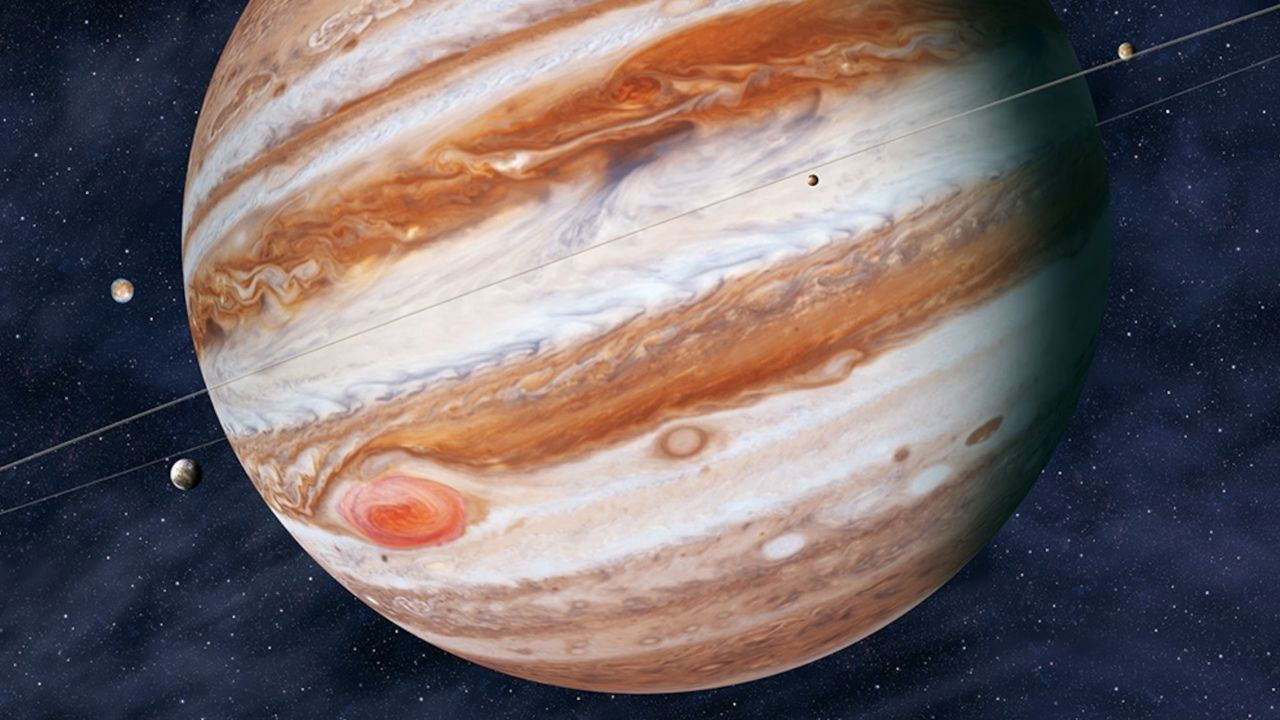Jupiter was once much larger

Jupiter, the largest planet in the Solar System, still stands out for its enormous size compared to other planets. However, new astrophysical models show that this gas giant was much larger in the past than it is today.
Jupiter, the Solar System’s first planet to form and the most massive, shaped everything around it with its powerful gravitational field. Scientists have conducted detailed modeling to understand the early properties and effects of this giant planet, and the results are astonishing.
Researchers from the California Institute of Technology and the University of Michigan think clues to Jupiter's origins lie in its smaller moons, which typically get far less attention, Chip said. The focus here is not on the four large Galilean moons, but on smaller moons like Amalthea and Thebe, which orbit closer to Jupiter.
These small moons in Jupiter’s inner orbits are thought to have formed with the planet, while most of the moons farther out are thought to be captured asteroids. The orbits of the inner moons have very small inclinations relative to Jupiter’s equatorial plane. Scientists have determined that these inclinations are shaped by the strong gravitational pull of Io. Their calculations of Io’s old orbit played a key role in revealing Jupiter’s size at that time.

One of the striking results of the research was the determination that Jupiter, approximately 3.8 million years after its formation, was between 2 and 2.56 times its current radius. This means that the volume of the planet at that time was about eight times today's. In other words, it is possible to say that at that time Jupiter was a giant, capable of fitting more than 10,000 Earths, rather than the approximately 1,300 Earths it has today.
In addition, the researchers found that Jupiter's magnetic field at that time was about 50 times stronger than today, indicating that the planet was surrounded by a giant magnetic shield in its early phase.
These new findings are seen as an important step in understanding Jupiter's role in the Solar System and the processes of planet formation. Future observations and modeling are expected to provide more detailed information about the evolution of this giant planet.
Cumhuriyet





